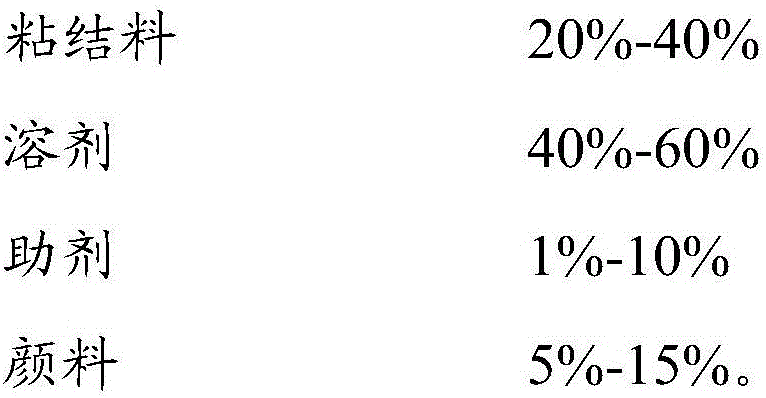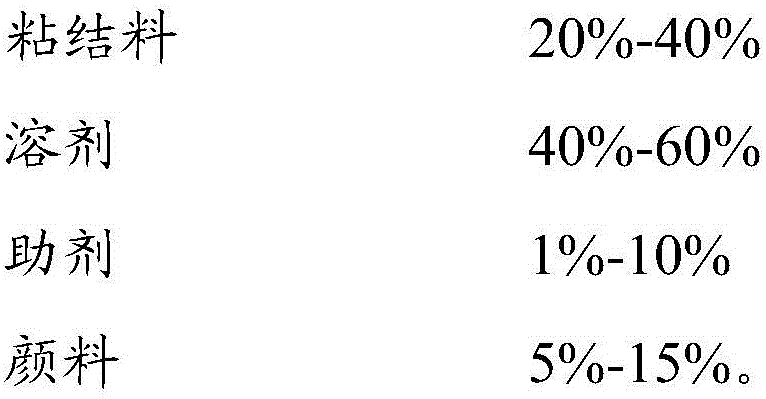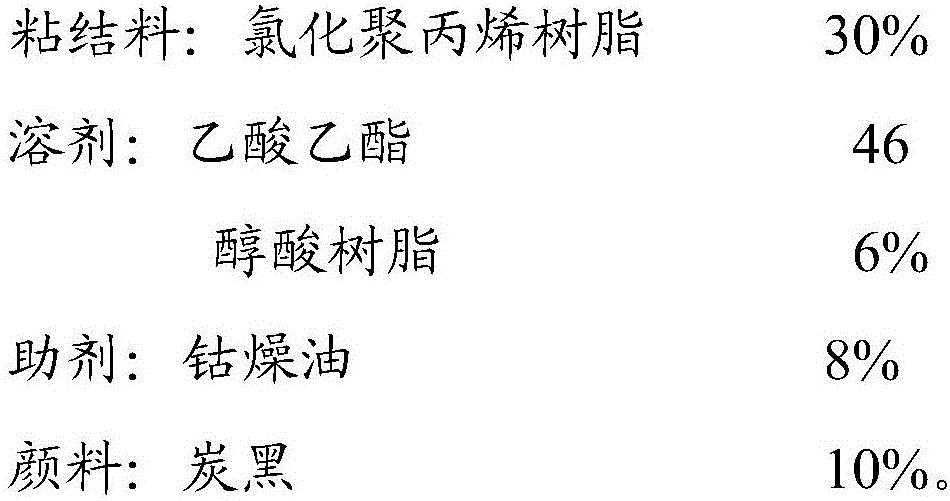Glass with printing ink layer and preparation method thereof
An ink layer and glass technology, applied in the field of glass with ink layer and its preparation, can solve the problems of peeling off, ink layer abrasion, breakage, etc., to improve environmental protection, good environmental protection, increase firmness and wear resistance Effect
- Summary
- Abstract
- Description
- Claims
- Application Information
AI Technical Summary
Problems solved by technology
Method used
Image
Examples
preparation example Construction
[0031] A method for preparing glass with an ink layer, comprising the following steps:
[0032] 1. Pre-processing.
[0033] Take the glass substrate and polish it; then clean the glass substrate to remove the ions on its surface.
[0034] It can be understood that conventional methods can be used to polish and ion-clean the glass substrate. However, the polishing powder is mixed with water to make a polishing solution with a concentration of 5%-10% by mass, and it is coated on the surface of the glass substrate and scrubbed with a brush. It has a good polishing effect, which is conducive to the subsequent ink layer adhesion. Similarly, conventional methods can be used for ion cleaning of glass, such as rinsing with deionized water, or cleaning with an ion blower, etc. However, performing ion cleaning in the above two ways at the same time has a better effect of removing ions.
[0035] Similarly, the ink layer can be screen-printed on the air side of the glass substrate (that...
Embodiment 1
[0054] A kind of glass with ink layer is prepared by the following method:
[0055] 1. Pre-processing.
[0056] 1. Polishing: Take float glass, wash it with water and then dry it to get clean and dry glass. Mix water with glass polishing powder to make a polishing solution with a concentration of 7.5% by mass, and then apply it evenly on the glass surface, and then clean the machine and let the brush in the machine rotate forward / reversely for 3 times. Then flush with water and polish the tin surface.
[0057] 2. Ion cleaning: Rinse the tin surface of the glass with deionized water, and then clean the tin surface of the glass with an ion blower to remove the ions on the surface.
[0058] Second, the first screen printing.
[0059] The ink material is printed on the pretreated tin surface of the glass substrate by screen printing to obtain the first ink layer.
[0060] The specific screen printing process conditions are as follows: use a squeegee to apply a pressure of 0.75...
Embodiment 2
[0073] A kind of glass with ink layer is prepared by the following method:
[0074] 1. Pre-processing.
[0075] 1. Polishing: Take float glass, wash it with water and then dry it to get clean and dry glass. Mix glass polishing powder with water to make a polishing liquid with a concentration of 5% by mass, and then apply it evenly on the glass surface, and then clean the machine to let the brush in the machine rotate forward / reversely for 3 times. Then flush with water and polish the tin surface.
[0076] 2. Ion cleaning: Rinse the tin surface of the glass with deionized water, and then clean the tin surface of the glass with an ion blower to remove the ions on the surface.
[0077] Second, the first screen printing.
[0078] The ink material is printed on the surface of the pretreated glass substrate by screen printing to obtain the first ink layer.
[0079] The specific screen printing process conditions are as follows: use a squeegee to apply a pressure of 0.5Mpa to the...
PUM
 Login to View More
Login to View More Abstract
Description
Claims
Application Information
 Login to View More
Login to View More - R&D
- Intellectual Property
- Life Sciences
- Materials
- Tech Scout
- Unparalleled Data Quality
- Higher Quality Content
- 60% Fewer Hallucinations
Browse by: Latest US Patents, China's latest patents, Technical Efficacy Thesaurus, Application Domain, Technology Topic, Popular Technical Reports.
© 2025 PatSnap. All rights reserved.Legal|Privacy policy|Modern Slavery Act Transparency Statement|Sitemap|About US| Contact US: help@patsnap.com



